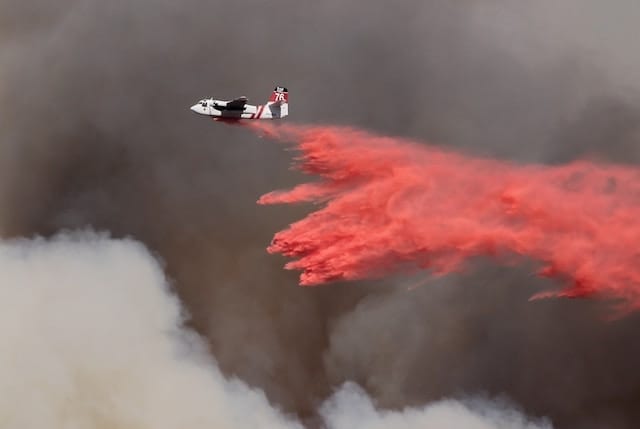It is November and two major wildfires are burning at each end in California. Combined, the wildfires have burned about 200,000 acres as of this writing. The death toll of the fire in the north now stands at 84 with more than 800 people missing. While President Trump blames California’s mismanagement of forests, science tells us that climate change is increasing the frequency and severity of wildfires.
The incidence of large forest fires in the western U.S. and Alaska have increased since the early 1980s and is projected to keep increasing in those regions as the climate warms. Large wildfires in the U.S. burn over twice the area they did in 1970, and the average wildfire season is 78 days longer, according to the Center for Climate and Energy Solutions. Changes in climate have created hot, dry conditions that increase fire activity in some areas. Much of the western U.S. will experience an average annual one-degree Celsius temperature increase which would increase the median burned area annually by as much as 600 percent in some areas.
Several studies have linked climate change and the frequency of wildfires. A 2014 study found that rising temperature and frequent droughts are expected to increase wildfires in many regions of the world. The number of days wildfires are likely to burn every year is increasing as global temperatures increase, according to a 2015 study. A 2016 study found that climate change will continue to “enhance the potential” for forest fires in the western U.S. The study also found that increases in temperature and vapor pressure across western forests over the past several decades contributed to 75 percent more forest areas experiencing high fire season fuel aridity and an average of nine more days a year of high fire potential.
The economic impacts of wildfires

Wildfires are economically costly. A University of Oregon project looked at the local economic impacts of large wildfires in the western U.S. What researchers found is that large wildfires “lead to instability in local labor markets by amplifying seasonal variation in employment over the subsequent year.” A San Diego State University 2009 study found that the economic costs of wildfires are much greater than generally estimated. The actual economic impact of the 2003 San Diego wildfires was over $2 billion more than was actually estimated.
A Rand Corporation assessment of wildfires on California’s residential insurance market found that premiums in the higher-risk areas are higher. The assessment also found that an aggressive emission control strategy “substantially reduces impacts after the middle of the 21st century.”
Reducing greenhouse gas emissions is the answer
Although greenhouse emissions from human activities are causing global temperatures to rise and changing climates, which leads to an increase in wildfire frequency and severity, it is not too late to act, as the Union of Concerned Scientists points out. We can take steps to reduce our impact on the climate. While the federal government under President Trump denies that climate change is occurring and has pulled the U.S. out of the global climate accord, businesses are taking steps to reduce their emissions. Finding out who those businesses are and supporting them is one way we can take climate change action.


